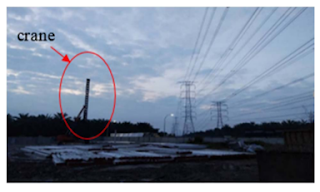For underground cables and long transmission lines, there will be significant effects of charging current on the accuracy of the protection relay. This charging current is the result of the distributed capacitance along the transmission line or underground cables as shown by figure below. The effects of the charging current for short transmission line is insignificant and can be neglected.
This charging current can introduces error in fault detection by installed protection relays. Some protection relays adapted with charging current compensation to eliminate the error in their algorithms.
One of the relay is line differential relay GRL100 by Toshiba. The charging current is also depending on value of the line voltage. So, the charging current is continuously calculated by the relay depending on the value of current line voltage and compensates it in the differential current calculation.
The procedure is the capacitance of the line be divided into two. Then, each terminal of the relay calculates the value of charging current at each terminal using the equation below.





.jpeg)


